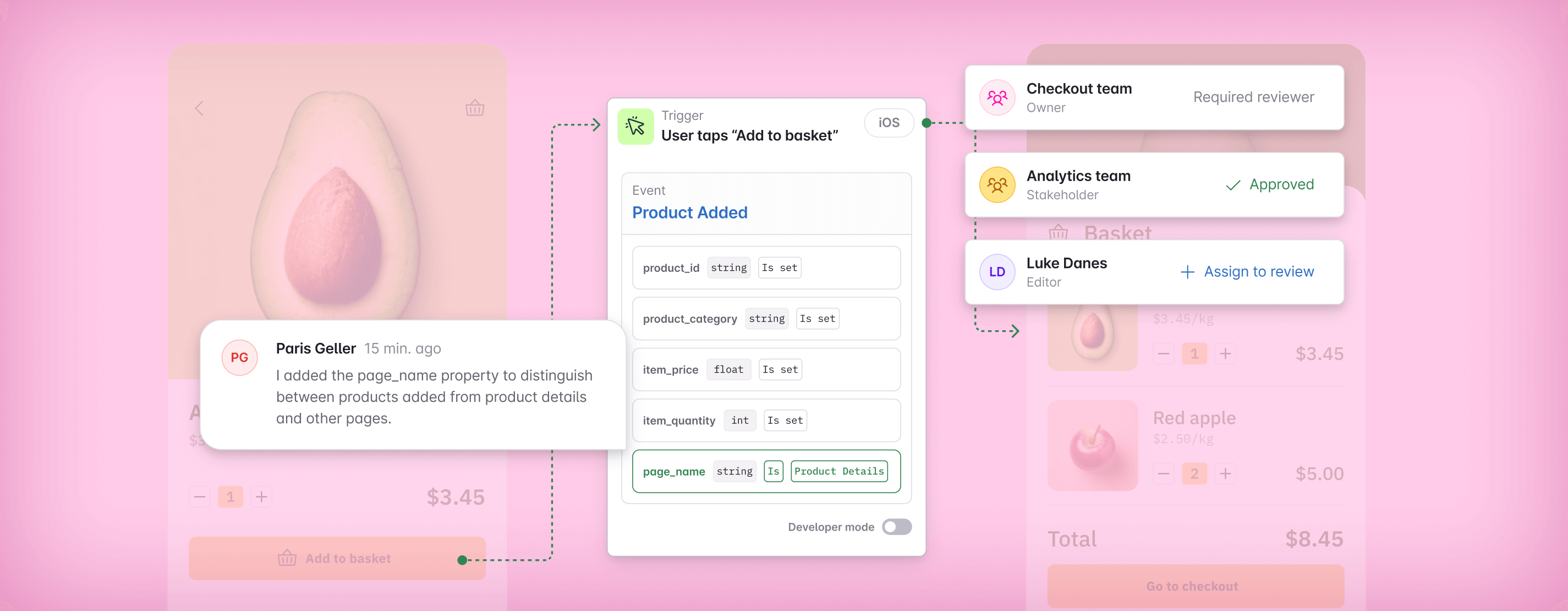In this article

Data Best Practices to Make Your Datasets More Convincing and Less Confusing
Data is a powerful thing. But it needs your help to do good. Without the right mindset, your data might be more confusing than it is convincing. Luckily, we rounded up some great advice from Geckoboard CEO Paul Joyce to help you bring your data back from the dark side.
We all have that one friend who loves to tell stories that seem interesting enough but just don't go anywhere. And we all have that other friend who has the party eating out of their hand with their stories. There's an approach that convinces and an approach that confuses. It's the same for managing your company's approach to data best practices.
Data is the most influential factor in your company's operational efficiency. Robust, precise data, collected diligently and with purpose, can improve team performances across the board and allow you to put out better products. Flawed data, haphazardly collected, can mire your business' day-to-day in confusion. Doubling down on data best practices will help you get on the right side of the convincing data/confusing data divide.
We spoke to Paul Joyce, CEO of Geckoboard, to figure out how his company goes about maximizing the value of its data.
Data That Convinces Is Free from Potential Stakeholder Bias
The most common cause of confusing data is a stakeholder’s bias for their own data needs in collecting or interpreting data. Data best practices for warding against this involve building a data strategy optimized for your entire company’s needs.
All data has to pass through someone’s hands before it can be used. As a result, there’s no such thing as entirely “neutral” data. Paul explains that "[in data], there is an editorial process. There's a curation that happens. Somebody in the middle there is deciding what to [include] and what not to." Unless you have a robust approach to data strategy, centered around defined questions, you can end up with confusing data that has been shaped (either in how it's collected or how it's interpreted) by individual stakeholder bias.
There’s no such thing as entirely “neutral” data.
Your organization has an overall “intention” with data. This intention is led by the answers to questions relating to specific KPIs, like “What product factors are leading to churn rate increase?” However, this intention can get muddled when individual stakeholders — devs, product managers, marketing leads, etc. — are handling the data. Each one will have their own questions they need answered and may collect or interpret data differently according to these biases.
This is a sure-fire recipe for confusing data that makes sense to one stakeholder but is hard to use or unclear for the rest.
You can flood your organization with convincing data, reflective of whole-company intent, and avoid the pitfalls of stakeholder bias by building a multi-perspective data strategy. Your data management architecture and tracking plan should involve input from all your stakeholders.
A given data strategy and tracking plan might be geared around answering as many of your stakeholders' questions as possible. These might include things like:
- What's our overall adoption rate?
- How often are users on subscription plan x churning?
- How often are users clicking on in-app upgrade prompts?
- How often are prospects finding our product through voice or natural language searches?
- What's our mean customer support response time?
By consulting with each of your stakeholders and figuring out what questions each of them needs to see answered by an ideal data strategy, you can create a convincing data plan that satisfies everyone’s data needs.
Data That Convinces Requires Clear Data Ownership
Ownership involves one person or a small number of people in your company taking responsibility for data storage and data quality management. It’s a direct route to convincing data. We've already noted the risk posed by misinterpretation, and for that reason, giving one person or a few people responsibility for data and data quality is high among data best practices.
Ownership does not mean limiting access to your data or confining its benefits to a few administrators. Your data should be accessible and of use to everyone in your organization, from your C-suite down to your junior sales reps. However, the more people responsible for handling your data, the more likely it is that mistakes will result in the form of unintended add-ins or redactions.
Paul sees clear data ownership as tied to data quality, as well as clarity. "[Ownership is] to ensure that the data quality is good...that the devs don't send the wrong events or the wrong properties or the wrong data types."
To ensure that your data is of the convincing kind, elect one or more people in your organization to have responsibility for data-based decision-making. Small businesses can afford to have one person with ownership of the data management process. Larger organizations with a higher number of stakeholder types or ones dealing with big data may wish to appoint multiple people.
Whatever configuration you go with, ensure your choices have high individual data literacy. They'll be handling things like standardizing file formats and file naming conventions for your data assets. They may also take care of data collection, data validation, and data protection.
“[Ownership is] to ensure that the data quality is good...that the devs don't send the wrong events or the wrong properties or the wrong data types.”
These will be the people in your organization with ownership of your datasets. This will allow you to engage stakeholders on their preferred input while keeping your data coherent and convincing.
Paul elaborated on Geckoboard's approach to data ownership, "For us, data is owned by a product and ultimately our VP of product. And so we sat down, and we discussed what the problems with our current data ingestion was, our event tracking and all of that kind of stuff...Unless [ownership and] communication is totally in sync there, there is sufficient room for interpretation and misinterpretation to come in."
Data That Confuses Comes from Inflexible Data Strategies
Data best practices call for continually reassessing your data management plan for flaws and areas for improvement. Best practices don’t stay still, and neither should you when it comes to your approach to maintaining data strategy.
Data that confuses results from an over-commitment to particular KPIs or metrics. The importance of your starting metrics may vary over time. For example, click-through rates from launch-period marketing material or seasonal ad banners will only be useful as KPIs some of the time.
As well as KPIs shifting, your target audience's behaviors and needs will change. You must prepare to amend and alter your approach accordingly. Paul loves this philosophy. "[I] think [this] is a more pragmatic, probably more realistic approach to getting useful data. I think embracing the chaos and the messiness is an important thing. We can't have this idea that all of our data is as pure as the driven snow; we should have reasonable skepticism around some of this kind of stuff."
To guard against inflexibility in your data strategy, re-evaluate it at regular junctures with your stakeholders and restructure accordingly. For instance, get together with your marketing personnel at 30, 60, and 90 days after a product launch and assess whether the data they're getting helps them make the process improvements they want to. They may be finding that your initially agreed-upon KPI (e.g., age and location of your prospects) is not giving them much to go on, and a change (e.g., to the professional profile of your prospects) is required.
“We can't have this idea that all of our data is as pure as the driven snow; we should have reasonable skepticism around some of this kind of stuff.”
Similarly, meet with your devs and engineers at regular intervals and analyze whether your existing North Star metrics are allowing them to gain a firm grasp of how well your product is working for your users. Let's say you're running a marketplace for sellers of bespoke goods. You may have started with "Monthly Listings per User" as your North Star only to find that "Time-to-Sell from First Listing" might prove a better bet. Time for a change in data strategy!
You can't chart a forward course with a rigid data plan. Stay flexible, and your data will prove more relevant and more convincing.
Gearing Up for Data Best Practices
One of the main things differentiating data that convinces from data that confuses is where that data lives and the tools used to handle it. You need to establish a single source of truth for your data.
Your data will come from various sources. Each stakeholder group may well have their separate tech stacks for gathering the data they need. Some of it might be in batch, some of it in real-time. To that end, tools like Salesforce CRM or Zendesk are great for acquiring specific data, but you then need a tool to act as a centralized knowledge store.
Avo can fulfill this role for your business. It offers seamless data integration and all kinds of elite data governance functions, from version history for your tracking plan to standardized events across platforms. It contains an automation for validating metric data, and it also comes with in-built solutions for tracking and maintaining your data quality.
Find out more and try Avo today.
Block Quote

